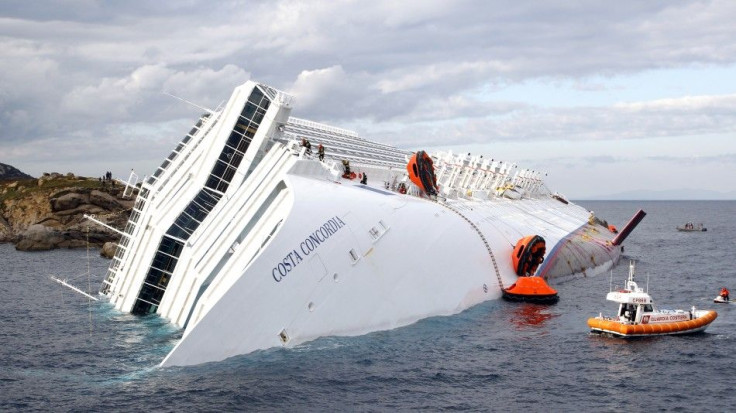Cruise Ship Sinking: Costa Concordia Tragedy Unlikely to Hurt Industry Long-Term

The recent tragedy of the Costa Concordia luxury cruise liner off the Western coast of Italy has prompted a focus on safety issues related to cruise-lines, which is the fastest-growing sector of the global travel industry.
The industry has been growing by leaps and bounds – indeed, since 1970 cruise-lines have delivered a phenomenal 2,100 percent growth, according to trade figures.
The growth has particularly accelerated over the past decade.
Since 2000, the North American cruise-line fleet has increased by almost 60 percent, while capacity soared by 86 percent due to the introduction of larger vessels.
According to travel expert Howard Hillman at least 10,000,000 people take a cruise each year – the overwhelming majority of them (80 percent) are from North America.
A total of 14.8 million passengers went on cruises in 2010, an increase of 10.3 percent over the prior year, according to cruiseindustryfacts.com.
The economic impact of the cruise business has been significant.
In 2010, the North American cruise industry generated almost 330,000 jobs which, in turn, contributed a $15.2 billion wage impact upon the U.S. economy, a 5.1 percent increase in employment and a 7.0 percent rise in wages over 2009, according to the Cruise Lines International Association (CLIA).
In the U.S., the cruise-lines industry is dominated by three states. Florida, California and New York. Florida accounts for 60 percent of all U.S. embarkations – indeed, the industry generated $6.3 billion in direct spending which helped create about 124,000 jobs paying $5.4 billion in income in the Sunshine State alone in 2010.
Florida's prominent role in the industry is largely explained by its five cruise ports: Miami, Port Everglades, Port Canaveral, Tampa, and Jacksonville.
Christine Duffy, CLIA’s president, said in a statement: “As a global industry, cruise lines have managed to navigate through some tough economic times that have made vacationing decisions for millions of people more difficult.”
Moreover, each cruise ship is subject to more than 60 safety, environmental and health inspections annually to guarantee that they comply with both federal and international regulations.
Although passengers board cruise ships to voyage to beautiful locales in the Caribbean and the Mediterranean, it could be argued that they enjoy the vessel itself, given the wide array of luxuries available.
Onboard amenities and facilities include, among other things, cell phone access, Internet cafes and wireless fidelity zones, even bowling alleys, elegant restaurants, gambing casinos, spas, health and fitness centers.
Industry analysts point out that the cruise industry has tremendous upside – only about 20 percent of U.S. adults have ever taken a cruise. Thus, there is a huge untapped market waiting to be targeted.
However, cruises don't come cheap – pricing would likely block out anyone less than middle-class from these magnificent sailing ships. Industry data suggest that average passenger is affluent and middle-aged – on average; they are about 46 years old and earn at least $93,000 per household.
The cruise-line industry is highly concentrated; there are only three major players: Carnival Cruise; Royal Caribbean Cruises Ltd.; and Star Cruises.
Dr. Ross A. Klein, a professor of sociology at Memorial University of Newfoundland in St. John's, Newfoundland, Canada, and an expert on the cruise industry, told IB Times that Carnival is the largest carrier and controls more than 50 percent of the cruise market.
Indeed, Carnival (which is the ultimate parent of Costa Concordia) has become virtually synonymous with the cruise industry. Carnival also owns the Princess Cruise line.
Royal Caribbean controls about 27 percent of the market, and Star Cruises (which owns NCL) controls about 12 percent. “There has been major consolidation of the industry in the 1990s and early-2000s,” he said.
Klein adds that while “there are small players, more like niche cruise lines, it would be difficult for a new company to enter the mass market.”
Now, as reports come in about official incompetency and potential criminal liabilities with respect to the Costa Concordia disaster, the industry may be worried about the tragedy's impact on the industry.
Klein told IB Times that he does not think the Italian incident will have a long-term negative effect.
“I think this will be a blip for two months or so and then people will forget,” he said.
“Initially the biggest impact will be on new cruisers and those who were marginally decided about taking a cruise.”
Klein added, however, that the Costa Concordia saga represented the worst in loss of life in recent years for North American-owned carriers.
The cruise industry has faced a number of other challenges in recent years, including the global economic recession and historic high fuel prices. However, the cruise business has somehow appeared to have survived these calamities – much better than the rival airline industry.
Yes, Carnival will surely take a large financial hit from the Costa Concordia tragedy, but there's no reason to think the cruise industry won't emerge stronger than ever after a brief lull.
Indeed, China, with its huge new army of affluent consumers and newly-minted millionaires may provide a whole new lucrative market for cruise lines.
© Copyright IBTimes 2024. All rights reserved.





















